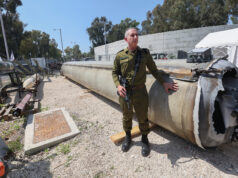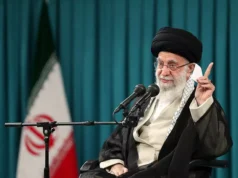The peak of lunacy in the American fight against ISIS may have been reached.
Remember that in October 2013, with ISIS bearing down on a Yazidi city in Syria, Pentagon spokesman Adm. John Kirby told reporters U.S. air power wouldn’t save Kobane, but that there was a “larger strategy” in place. “The primary goal of the campaign is not to save Syrian cities and towns,” U.S. Central Command officials echoed, “but to go after ISIS senior leadership, oil refineries, and other infrastructure that would curb the group’s ability to operate.” Individuals caught in the maelstrom were just unfortunate.
Last week, U.S. forces took out 116 of about 300 ISIS oil tanker trucks headed for Turkey. Not bad? Oh, yes it was – and it explains a lot about the ineffectual “war” we fighting.
Asked by The Washington Examiner why it took 14 months of air warfare to make the first strike on oil tanker trucks, Operation Inherent Resolve spokesman Col. Steve Warren replied that American officials were deeply worried about harming the truck drivers, who were working for the Islamic State but might not be ISIS themselves. U.S. officials settled on a plan to drop leaflets on the trucks about 45 minutes before the raid, warning the drivers that an attack was coming, while U.S. pilots flew low passes over the area. Planning all that took time.
Warren also noted that the planes had expended all their ordnance and so had to return to base.
So, while the U.S. recognizes that oil sales are putting $50 million a month into the coffers of ISIS, which is our declared enemy and which uses the money to inflict horrors on the people it controls (the UN, not generally inclined to jump off the deep end, calls the massacres of Yazidis “a possible genocide“) but worries more about the possibility of killing non-ISIS truck drivers than about ISIS killing Christians and insufficiently radical Muslims. And when it finally decides to attack, it brings sufficient ordnance for fewer than half the targets.
LTG Charles Brown, Jr., head of U.S. Air Force Central Command, told Air Force Times, “As we work through this with our authorities and our lawyers and others, we want to minimize civilian casualties associated with this. We can’t say that everybody that is around those trucks is 100 percent Daesh. That’s the reason why we give then an opportunity to leave.”
It has, no doubt, something to do with President Obama’s demand for a “zero casualty war,” refusing clearance for up to 75% of bombing missions to avoid casualties on the ground. Pentagon spokesmen told reporters, “Despite U.S. strikes being the most precise in the history of warfare, conducting strike operations in the heavily populated areas where ISIL hides certainly presents challenges. We are fighting an enemy who goes out of their way to put civilians at risk. However, our pilots understand the need for the tactical patience in this environment. This fight against ISIL is not the kind of fight from previous decades.”
“Tactical patience,” consulting with the lawyers, and immaculate warfare is of no use to people dying today. An impossible standard of casualty mitigation only means the U.S. is indirectly rather than directly responsible for their misery. And while that may salve the president’s conscience, it means prolonging the war means with more attendant suffering for those in the war zone.
Prolonging the war is the net result of American choices, and those choices are the result of the administration’s inability to articulate goals for the fighting.
- What is it that we plan to achieve in Syria and Iraq?
- What is it supposed to look like when the war ends?
- Who will be in; who will be out?
- How can our military ––alone or in coalition — bring about conditions on the ground under which our political goals can be met?
- How will we know when to stop fighting?
If those questions cannot be answered – if the Administration refuses to answer them – the U.S. has no business expending national treasure there. If there are answers a) what are they, and b) what is the strategy for reaching the goal?
In his invaluable book Every War Must End, military strategist Fred Ikle wrote that the essential lesson about war is that it is easier to start one than successfully conclude one. Having achievable, if not perfect, aims — both military and political — and stopping when they have been met is key to success. The alternative is to slog along with grinding casualties until the conflict peters out ignominiously when public opinion no longer supports the effort and then break the deal.
The goal of ISIS is clear: extend what it calls the caliphate as far as it can, subjugating and/or killing non-Sunni Muslims. The Russian goal in Syria is clear: to support the Assad government in Damascus — the “legitimate” government, Putin calls it — against its enemies and to kill as many Sunni jihadists as possible. The Turkish goal is emerging: to use the cover of war to bomb Kurds, and to make as much money as possible off the illegal sales of ISIS oil through Turkey. (Is it possible that the U.S. is in tacit agreement here, accounting for hitting less than half the trucks?) The U.S. goal appears to be to get out.
The U.S. calls for tactical patience and zero casualties, and hopes, according to LTG Brown, “to be pretty well done with Daesh by the end of 2016.” He acknowledges, though, “That’s probably aspirational.”
Without achievable goals, it will remain aspirational.





